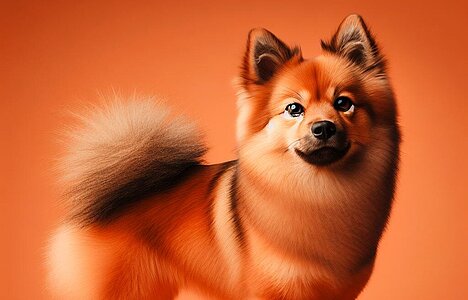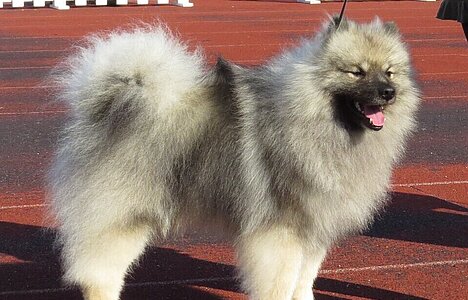The German Spitz: A loyal companion with an ancient history
The history of the German Spitz
The roots of the German Spitz go way back to the Bronze Age. This dog breed originated in Germany and was particularly popular with farmers and aristocrats in the past. The German Spitz was used as a guard dog and companion and developed over the centuries into different sizes and varieties, such as the Dwarf Spitz, Small Spitz, Medium Spitz, Large Spitz and Wolf Spitz. Despite their different sizes, all varieties share the same characteristic features.
Who is the German Spitz suitable for?
The German Spitz is a very adaptable dog and is suitable for a variety of households. Whether you live in a city apartment or in the countryside, this dog will be happy as long as it gets enough attention and exercise. Families with children, singles and older people can all enjoy a German Spitz equally. Its alertness and loyalty also make it a good guard dog.
Character and nature
The German Spitz is known for its liveliness and intelligence. He is curious, alert and very affectionate towards his family. These dogs are often suspicious of strangers, which makes them good watchdogs. Despite their small size, they are courageous and have a strong character. Their intelligence and eagerness make them easy to train, although they can sometimes show a stubborn side.
Appearance of the German Spitz
With its dense, protruding coat and characteristic mane around the neck, the German Spitz is a real eye-catcher. The pointed ears, bushy tail and lively eyes give it a fox-like expression. The coat colors vary and include white, black, brown, orange and many other shades. Weight and height vary according to size, with dwarf spitzes being only around 20 cm tall, while wolf spitzes can reach up to 55 cm.
Grooming the German Spitz
The dense coat of the German Spitz requires regular grooming to prevent matting and keep the coat healthy. Daily brushing is ideal, especially during the shedding period. Bathing should only be done when necessary so as not to impair the skin's natural protective function. Dental care should not be neglected either - regular brushing helps to prevent tartar and dental disease.
Health
The German Spitz is considered a robust and healthy dog breed. However, like all breeds, it can be susceptible to certain health problems. These include patellar luxation (dislocation of the kneecap), eye problems and hip dysplasia. Responsible breeding and regular veterinary check-ups are important to ensure your dog's health.
Size and weight
The size of the German Spitz varies depending on the type:
- Miniature Spitz: 18-22 cm, 1.4-3.2 kg
- Small Spitz: 23-29 cm, 3-4 kg
- Medium Spitz: 30-38 cm, 7-11 kg
- Large Spitz: 42-50 cm, 15-20 kg
- Wolf Spitz: 43-55 cm, 16-22 kg
Exercise requirements
The German Spitz is an active dog that needs regular exercise to stay healthy and happy. Daily walks and playtime are a must. Despite its energy, the German Spitz can also adapt well to life in the city as long as it gets enough exercise and mental stimulation.
Training recommendations
Due to its intelligence and eagerness, the German Spitz is easy to train. Positive reinforcement and patience are the keys to successful training. Early socialization is important to ensure that the dog gets along well with other people and animals. Learning tricks and participating in dog sports such as agility can also bring a lot of joy to the German Spitz.
Interactions with children and other animals
The German Spitz is known for its friendliness and playful character. It generally gets on very well with children as long as they treat the dog with respect. It also usually gets along well with other pets, especially if it has been socialized early on. However, you should always keep an eye on interactions to ensure that everyone involved is safe and happy.
Recognition by the FCI
The German Spitz is recognized by the Fédération Cynologique Internationale (FCI). The FCI classifies it in Group 5 (Spitz and original type dogs) and in Section 4 (European Spitz).
Information
Alternative Names
Country of origin
Appearance
Height at withers
Weight
Life expectancy
Breeding
FCI-Group
Standard
Section
More pictures
Similar to German Spitz
These dog breeds look similar to the German Spitz or resemble it in character.




